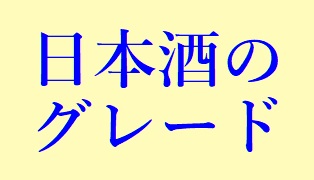8 Specific Names of Sake
According to the tax law, Japan sake is classified into the following 8 specific names. And sake that does not meet these criteria is called “Futsu Syu“. So there are a total of 9 different names.
- “Daiginjo Syu“:RPR 50% or less.
- “Junmai Daiginjo Syu” : RPR 50% or less, and no distilled alcohol added.
- “Ginjo Syu” : RPR 60% or less.
- “Junmai Ginjo Syu” : RPR 60% or less, and no distilled alcohol added.
- “Tokubetsu Junmai Syu” : RPR 60% or less, the special production methods, and no distilled alcohol added.
- “Tokubetsu Honjozo Syu” : RPR 60% or less, and the special production methods.
- “Honjozo Syu” : RPR 70% or less.
- “Junmai Syu” : RPR has no criteria, and no distilled alcohol added.
However, it is difficult for an amateur to understand the names and meanings of these nine types and choose Japan sake. Therefore, this website focuses only on RPR and classifies the grades of sake into the following 4 types.
Please note that this display is unique to this website and does not work on other websites or sake stores. Just in case.
Grade : 4 (so-called Daiginjo class)
- It is labeled “Daiginjo“.
- Or, the label says RPR 50% or less.
Grade : 3 (so-called Ginjo class)
- It is labeled “Ginjo” or “Tokubetsu“.
- Or, the label says RPR 60% or less.
Grade : 2 (so-called Honjozo class)
- It is labeled “Honjozo“.
- Or, the label says RPR 70% or less.
- Only “Junmai syu” does not have an RPR standard, but we are rated as Grade 2.
Grade : 1 (Else)
- Other sake that do not fit the above criteria.
For example, some sake is labeled “Ginjo” and “RPR 50%”, but in that case, other factors are taken into account and judged appropriately.
Which is the best “Grade”?
This is just a generalization, but higher grade sake polishes more rice, so it costs more and the price rises.
As for the characteristics of high grades, I think that there are many impressions such as clean, fruity, elegant, smooth, delicate, etc. On the other hand, in the case of low grade, it is an image of rich, full-body, savory, round etc.
However, as you can see when you compare the sake, the taste and aroma are completely different from brewery to brewery. It is often the case that Grade 2 from one brewery tastes much better than Grade 4 from another.
The criterion for choosing sake is your preference. It is not best to choose sake only by grade. It’s up to you to decide your nose, mouth, and tongue.







Comment